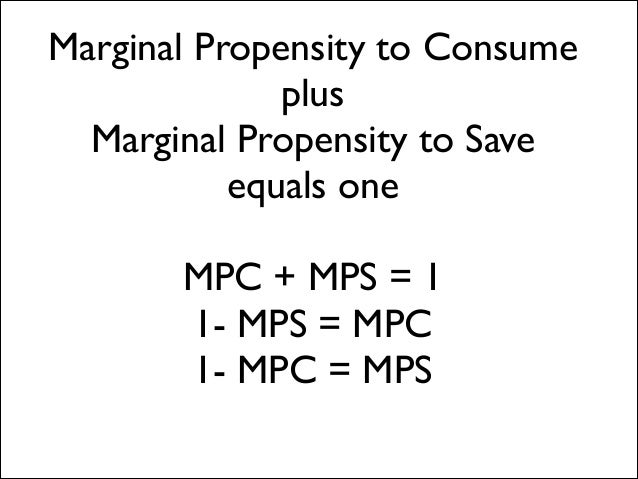MPC & MPS:
Marginal propensity to consume: delta C / delta DI ; % of every extra dollar earned that is spent
Marginal propensity to save: delta S / delta DI ; % of every extra dollar earned that is saved
MPC+MPS=1
1-MPC=MPS
1-MPS=MPC
Spending Multiplier Effect: initial change spending (C,Ig,G,Xn) causes larger change in aggregate spending or AD
Formula: Multiplier = change in ad / change in spending
Happens because expenditures and income flow continuously which sets off a spending increase in economy
Formula: Multiplier = 1 / 1-MPC or 1 / MPS
Multipliers are positive when there's increase in spending and negative when there's decrease
Tax Multiplier: when government taxes, multiplier works reverse bc money leaves circular flow
Formula: Tax Multiplier = -MPC / 1-MPC or -MPC / MPS
if tax cut, multiplier is positive bc more money in circular flow
*MPS, MPC, Multipliers:

Fiscal Policy: changes in expenditures or tax revenues of federal govt
2 tools of fiscal policy: taxes and spending (govt can increase or decreases)
Fiscal Policy is enacted to promote nation’s economic goal, price stability, economic growth
Deficit, Surpluses, Debt:
Balance budget- revenues=expenditures
Budget deficit- revenues<expenditures
Budget surplus- revenues>expenditures
Government debt- sum of all deficits-sum of all expenditures
Govt must borrow money when running budget deficit
Govt borrows from: individuals, corporates, financial institutions, foreign entities or govt
2 options:
- Discretionary Fiscal Policy (action): expansionary fiscal policy- deficit // contractionary fiscal policy- surplus
- Non-Discretionary Fiscal Policy (no action)

You need to remember that during a Contractionary period, the Government try to reduce spending, GDP and AD because we are in an inflation period and for Expansionary, the Government increase spending in an effort to increase GDP and AD by taxing less because we are in a period of recession.
ReplyDelete